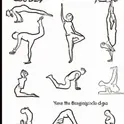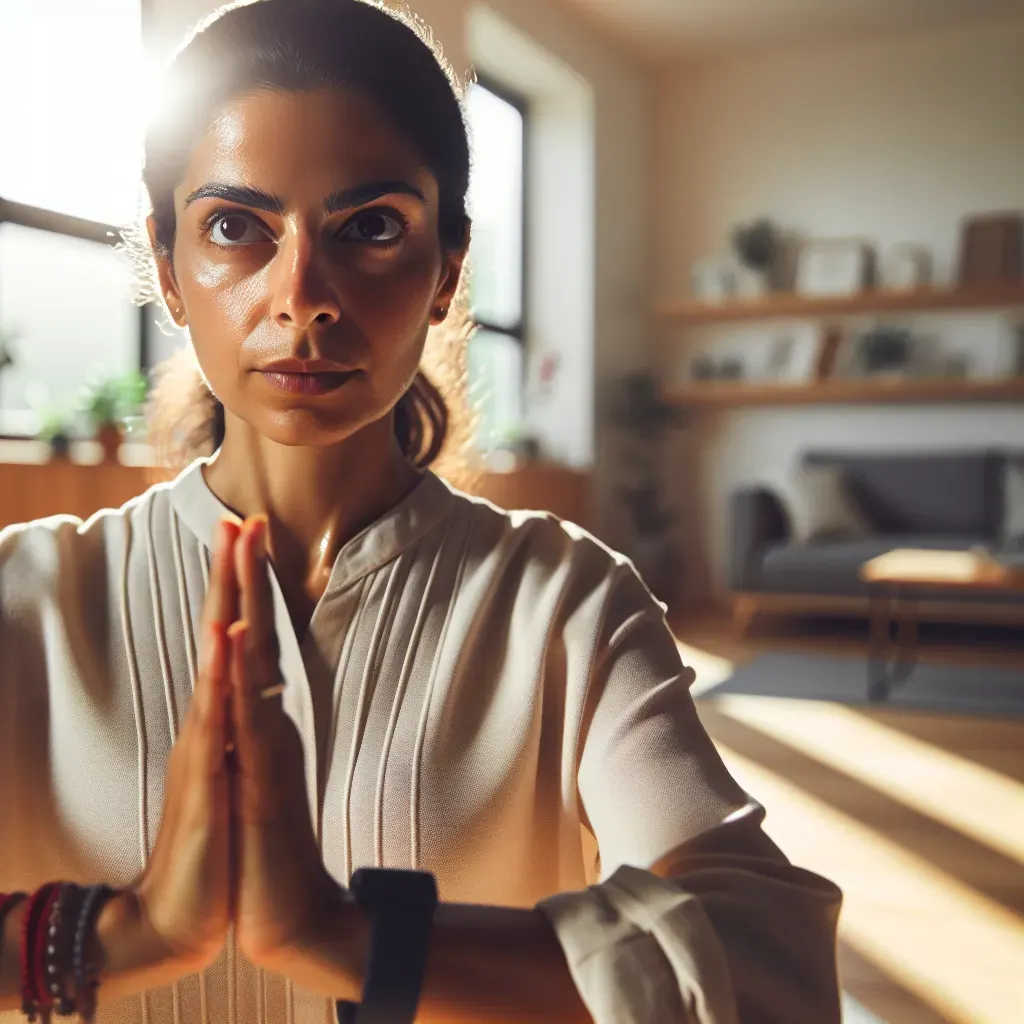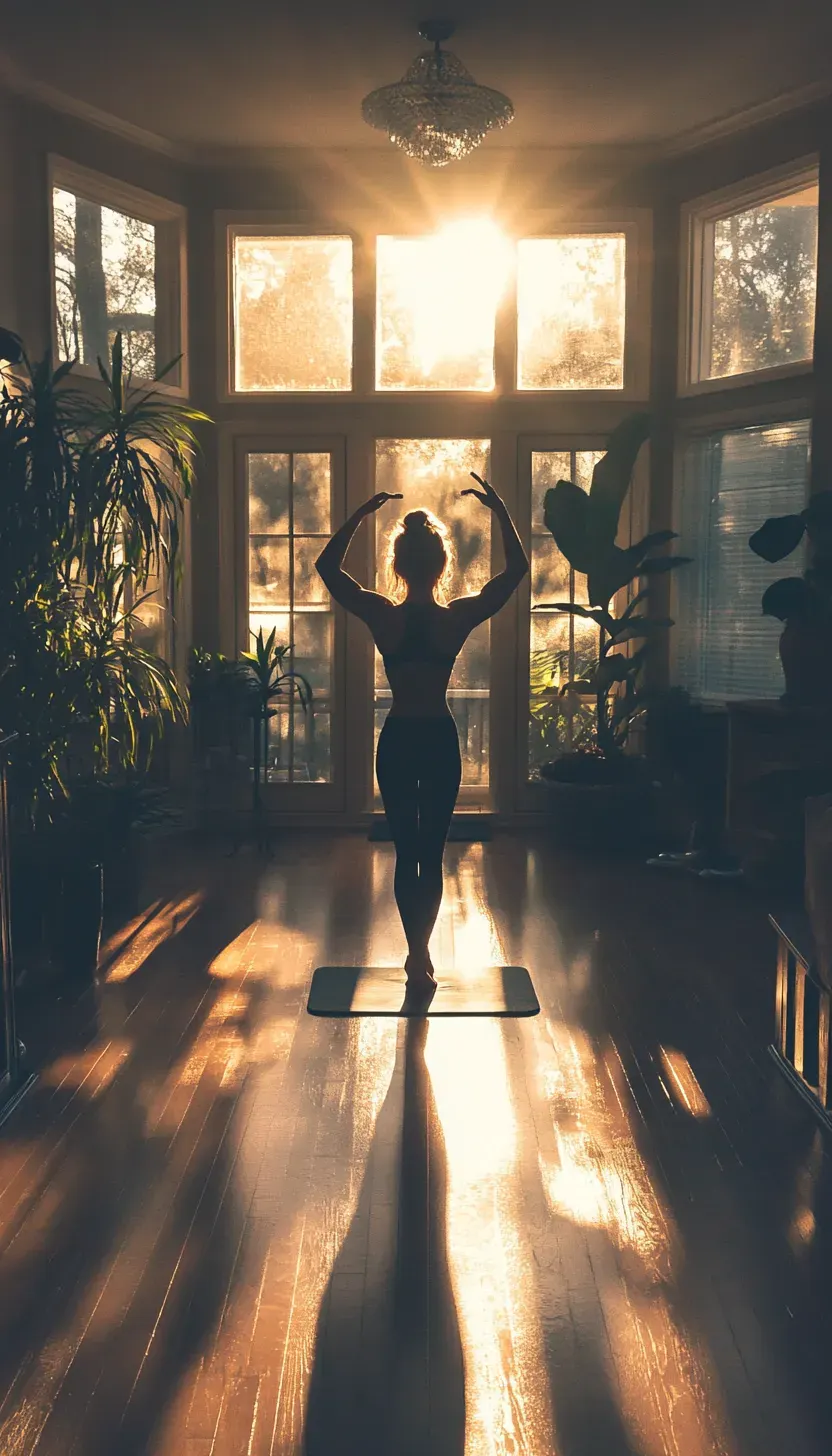Unleash Your Flexibility And Stability With Power Yoga Holds
Table Of Contents
1. Introduction
2. Does Power Yoga Increase Flexibility?
3. What Type of Yoga is Best for Strength and Flexibility?
4. What is Power Yoga Called?
5. Which Yoga Increases Flexibility?
6. What Happens When You Do Power Yoga Every Day?
7. What is the Difference Between Yoga and Power Yoga?
8. Can Beginners Do Power Yoga?
9. How to Start Power Yoga?
10. How Many Poses Are in Power Yoga?
11. How Long Does it Take to See Results from Power Yoga?
12. What Not to Do After Yoga?
13. Can Power Yoga Reduce Belly Fat?
14. Conclusion
In the intricate dance between flexibility and stability lies the transformative power of sustained yoga poses. As yoga enthusiasts and fitness aficionados, you already grasp the profound impact that each stretch, twist, or hold can have on your body.
However, what if we told you that within the realm of power yoga holds lies a hidden key to unlocking not only enhanced physical performance but also a deeper connection with your inner strength?
Picture yourself standing strong yet supple, embodying a balance that transcends mere bodily movement. This is where power yoga beckons, promising a journey towards newfound resilience and agility unlike any other.
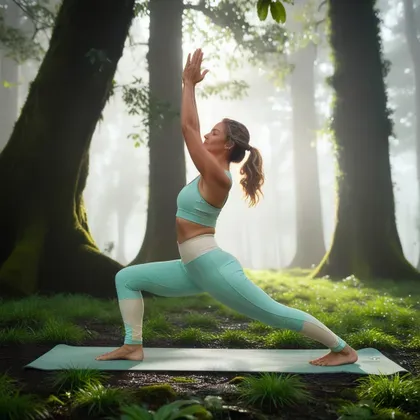
Amidst the myriad hues of yoga practices, power yoga shines as a beacon for those seeking not just flexibility or strength but a harmonious fusion of both elements.
Through deliberate breathwork and unwavering focus in sustained poses, power yoga weaves together threads of stability and elasticity until they form an unbreakable bond within you.
Imagine feeling as rooted as an ancient tree yet as fluid as a flowing river—a juxtaposition that embodies the essence of power yoga holds.
It is through this dynamic interplay that individuals like yourself can sculpt not just muscles but character, forging a path towards physical prowess that resonates with every fiber of your being.
Dive into this transformative experience with us as we unravel the mysteries and unveil the wonders of embracing flexibility and stability through the artful practice of power yoga holds.
Does Power Yoga Increase Flexibility?
Power yoga, known for its dynamic and challenging sequences, is a powerful tool for enhancing flexibility. Through sustained holds in various poses, power yoga stretches muscles and tissues deeply, promoting an increased range of motion in the body.
Unlike traditional static stretching, power yoga combines strength-building elements with lengthening movements, creating a unique blend that not only improves flexibility but also strengthens muscles at the same time.
This dual focus on flexibility and strength sets power yoga apart as a comprehensive practice for overall physical performance.
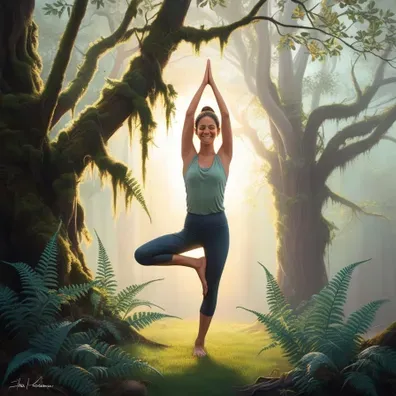
By engaging in power yoga regularly, individuals can experience noticeable enhancements in their flexibility over time. The intensity of power yoga sessions challenges the body to adapt and become more limber through consistent practice.
As practitioners flow through sequences and hold postures for extended periods, they gradually push past their comfort zones, leading to significant improvements in flexibility throughout the entire body.
Whether aiming to touch toes with ease or achieve advanced poses, the consistent practice of power yoga can truly unlock newfound levels of flexibility.
Furthermore, the dynamic nature of power yoga makes it an ideal choice for those seeking both physical and mental transformation. The deliberate emphasis on holding poses builds stamina and focus while deepening the connection between mind and body.
As practitioners delve into longer holds during power yoga sessions, they cultivate endurance not only physically but also mentally—the ability to remain present and engage with discomfort while maintaining breath control.
In this way, power yoga doesn’t just increase flexibility; it transforms practitioners by fostering resilience and mindfulness as they navigate challenging poses and transitions on their mat.
What Type Of Yoga Is Best For Strength And Flexibility?
When it comes to enhancing both strength and flexibility through yoga, there are various styles to consider. One particularly effective form is Vinyasa yoga, often referred to as flow yoga.
This dynamic practice seamlessly merges movement and breath in a continuous flow of postures, promoting not only muscular endurance but also deep stretching that contributes to improved flexibility.
By engaging in Vinyasa yoga regularly, practitioners can experience enhanced muscular strength while simultaneously increasing their range of motion.
Another style that stands out for fostering strength and flexibility is Ashtanga yoga. Rooted in a set sequence of poses that progressively challenge the body’s physical limits, Ashtanga yoga builds both muscle power and suppleness.
The repetition of specific postures in each session allows for gradual improvement in strength while maintaining flexibility throughout the body. As practitioners advance through the series, they cultivate a robust foundation of physical capabilities beneficial for overall fitness and performance.
Additionally, Yin yoga offers a unique approach to strengthening muscles and increasing flexibility by holding passive poses for longer durations. This meditative practice targets connective tissues, tendons, and ligaments rather than just muscles.
By staying in these poses for extended periods – typically 3-5 minutes or even more – individuals can access deeper layers of tension release and joint mobilization, leading to enhanced flexibility accompanied by improved stability within the joints.
Integrating Yin yoga into a routine can complement dynamic practices like Vinyasa or Ashtanga, providing a holistic balance between strength and flexibility benefits.
What Is Power Yoga Called?
Power yoga, often referred to as "Vinyasa Yoga," is a dynamic and vigorous form of yoga that focuses on strength, flexibility, and stamina. The term "power yoga" was coined in the 1990s to describe a Western adaptation of traditional Indian yoga practices like Ashtanga.
Unlike more gentle forms of yoga, power yoga involves continuous movement through a series of poses synchronized with breath, making it an excellent choice for those looking to challenge both their physical and mental limits.
In Vinyasa or power yoga classes, practitioners flow from one pose to another with fluidity and precision, incorporating elements of strength training and cardiovascular exercise.
The fast-paced nature of power yoga makes it a popular choice for individuals seeking a more intense workout while still reaping the holistic benefits of a regular yoga practice. Its emphasis on engaging multiple muscle groups simultaneously helps improve overall body coordination, balance, and agility.
By embracing the dynamic sequences and challenging postures characteristic of power yoga, practitioners can cultivate both inner peace and outer strength. This style not only enhances physical fitness but also promotes mental clarity and focus through its mindful approach to movement.
Power yoga's empowering nature encourages individuals to push past their perceived limitations, fostering a sense of resilience and self-discovery on and off the mat.
Which Yoga Increases Flexibility?
Among the various styles of yoga, one notable form that stands out for enhancing flexibility is Hatha Yoga. Hatha Yoga incorporates a combination of physical postures (asanas) and breathing techniques to promote harmony between the mind and body, thereby improving flexibility.
Through regular practice of asanas in Hatha Yoga, individuals can experience increased joint mobility and muscle elasticity, leading to enhanced overall flexibility. Poses like Downward Dog, Cobra Pose, and Triangle Pose are key examples within Hatha Yoga that help stretch and strengthen muscles while improving range of motion.
Additionally, Yin Yoga is another style renowned for its ability to increase flexibility. Unlike more dynamic forms of yoga that focus on movement and flow, Yin Yoga involves holding passive poses for extended periods (usually 3-5 minutes or more).
These prolonged holds target the deep connective tissues in the body like ligaments and fascia, promoting greater flexibility over time. Poses such as Butterfly Pose and Dragon Pose in Yin Yoga specifically work on releasing tension in the hips and lower back, areas commonly associated with tightness.
Moreover, Vinyasa Yoga also plays a significant role in enhancing flexibility by incorporating fluid transitions between poses known as "flows." The continuous movement in Vinyasa sequences helps build heat within the body, allowing for deeper stretching and increased flexibility.
By seamlessly linking breath with movement, practitioners can access greater ranges of motion while developing both strength and suppleness simultaneously. Poses like the Warrior series and Sun Salutations within Vinyasa Yoga encourage practitioners to move dynamically through different positions, fostering agility and flexibility across various muscle groups.
What Happens When You Do Power Yoga Every Day?
Practising Power Yoga every day can lead to numerous benefits, including improved flexibility, increased muscle strength, better cardiovascular health, enhanced mental focus, and stress reduction. However, it's important to listen to your body and avoid overtraining. Incorporating rest days and varying your routine can help prevent injury and ensure balanced development.
What Is The Difference Between Yoga & Power Yoga?
The primary difference between traditional yoga and Power Yoga lies in the intensity and focus of the practice. Traditional yoga often emphasizes relaxation, meditation, and flexibility, while Power Yoga focuses on building strength and endurance through vigorous poses and continuous movement. Power Yoga is more dynamic and fitness-oriented, making it a great choice for those looking for a challenging workout.
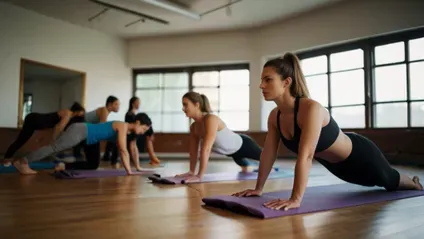
Can Beginners Do Power Yoga?
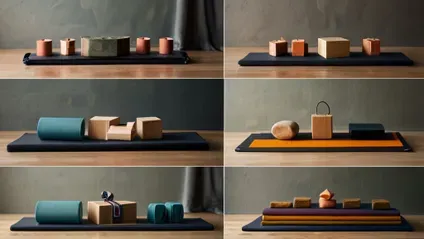
Yes, beginners can start with Power Yoga, but it is advisable to begin with a basic understanding of traditional yoga poses and principles. Power Yoga can be intense, so it's important to start slowly and listen to your body. Beginners may benefit from attending classes led by experienced instructors or using instructional materials like the Power Yoga DVD to ensure proper form and technique.
How To Start Power Yoga?
To start Power Yoga, consider the following steps:
- Find a Qualified Instructor: Attend classes led by certified instructors who can guide you through the poses and ensure proper alignment.
- Use Instructional Materials: DVDs like the Power Yoga DVD or P90X DVD Workout can provide structured workouts and demonstrations.
- Start with Basic Poses: Begin with foundational poses and gradually progress to more advanced ones as your strength and flexibility improve.
- Create a Routine: Consistency is key. Practice regularly to see significant improvements in flexibility and stability.
How Many Poses Are In Power Yoga?
The number of poses in Power Yoga can vary widely depending on the specific class or routine. A typical Power Yoga session might include 20-30 poses, ranging from basic to advanced levels. The focus is on maintaining a continuous flow and holding each pose to build strength and flexibility.
How Long Does It Take To See Results From Power Yoga?
Results from Power Yoga can vary based on individual fitness levels and consistency of practice. Generally, you can expect to see noticeable improvements in flexibility and strength within 4-6 weeks of regular practice. Enhanced mental clarity and reduced stress levels can be experienced even sooner.
What Not To Do After Yoga?
After a Power Yoga session, avoid the following:
- Skipping Cool Down: Always finish with a cool-down period to prevent muscle stiffness.
- Eating a Heavy Meal: Wait at least 30 minutes before consuming a large meal to allow your body to fully relax.
- Skipping Hydration: Rehydrate with water or a healthy beverage to replenish fluids lost during the workout.
- Engaging in Intense Activities: Give your body time to recover by avoiding strenuous activities immediately after your session.
Can Power Yoga Reduce Belly Fat?
Power Yoga can contribute to overall fat loss, including belly fat, through its combination of cardiovascular activity and muscle-strengthening exercises. While spot reduction isn't possible, the high-intensity nature of Power Yoga helps burn calories and build muscle, leading to a leaner, more toned physique over time.
Conclusion
Power Yoga offers a unique blend of strength, flexibility, and endurance training, making it an excellent choice for those looking to enhance their physical fitness and mental well-being.

By incorporating Power Yoga into your routine, you can experience significant improvements in flexibility, stability, and overall health. Whether you're a beginner or an experienced practitioner, Power Yoga provides a challenging and rewarding practice that can transform your body and mind.
Remember to start slowly, listen to your body, and stay consistent to reap the full benefits of this dynamic form of yoga.
People Also Asked
1. Does Power Yoga Increase Flexibility?
Yes, Power Yoga increases flexibility by incorporating a series of poses that stretch and elongate muscles, improving their elasticity over time.
2. What Type of Yoga is Best for Strength and Flexibility?
Power Yoga is one of the best types of yoga for building both strength and flexibility due to its combination of vigorous poses and continuous movement.
3. What is Power Yoga Called?
Power Yoga is often referred to as Vinyasa Flow because it is based on the Vinyasa style of yoga, emphasizing a flow of movements coordinated with the breath.
4. Which Yoga Increases Flexibility?
Several types of yoga, including Hatha, Vinyasa, and Yin Yoga, increase flexibility. Power Yoga is particularly effective due to its dynamic and strength-building poses.
5. What Happens When You Do Power Yoga Every Day?
Practicing Power Yoga daily can improve flexibility, muscle strength, cardiovascular health, mental focus, and stress reduction. However, it's important to avoid overtraining by incorporating rest days.
6. What is the Difference Between Yoga and Power Yoga?
Traditional yoga often emphasizes relaxation and flexibility, while Power Yoga focuses on building strength and endurance through vigorous poses and continuous movement.
7. Can Beginners Do Power Yoga?
Yes, beginners can do Power Yoga, but it’s advisable to start with a basic understanding of traditional yoga poses and principles. Beginners should start slowly and possibly use instructional materials like the Power Yoga DVD for guidance.
8. How to Start Power Yoga?
To start Power Yoga, find a qualified instructor, use instructional materials such as the Power Yoga DVD or P90X DVD Workout, start with basic poses, and create a consistent practice routine.
9. How Many Poses are in Power Yoga?
A typical Power Yoga session might include 20-30 poses, ranging from basic to advanced levels, focusing on maintaining a continuous flow and holding each pose to build strength and flexibility.
10. Can Power Yoga Reduce Belly Fat?
Power Yoga can contribute to overall fat loss, including belly fat, through its combination of cardiovascular activity and muscle-strengthening exercises, leading to a leaner, more toned physique over time.
